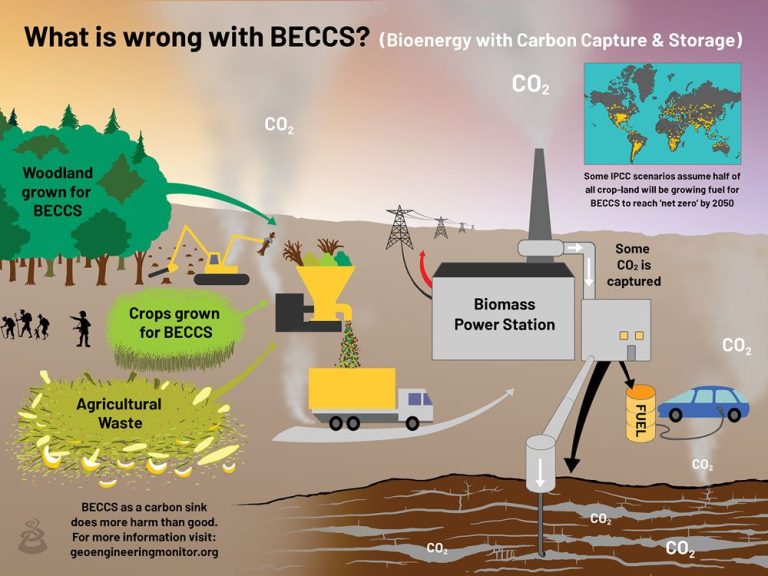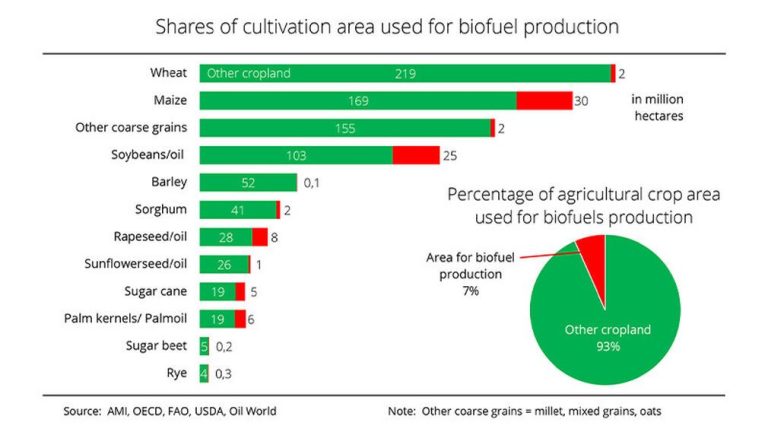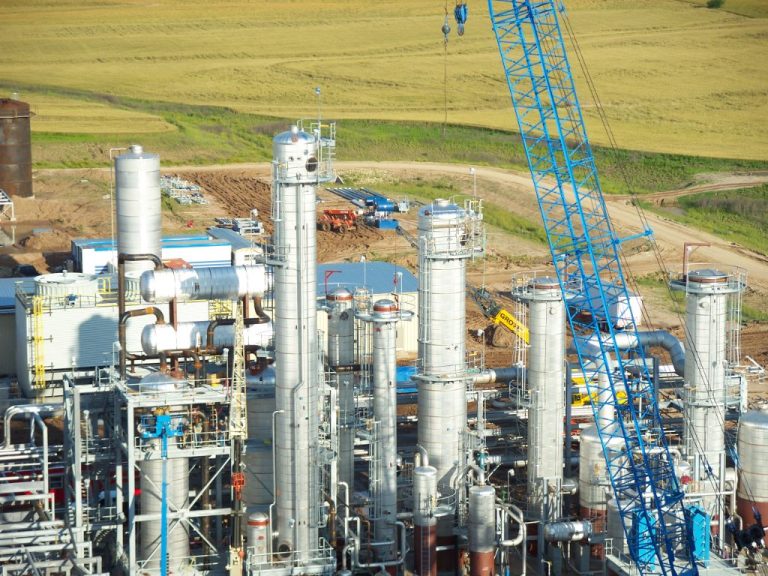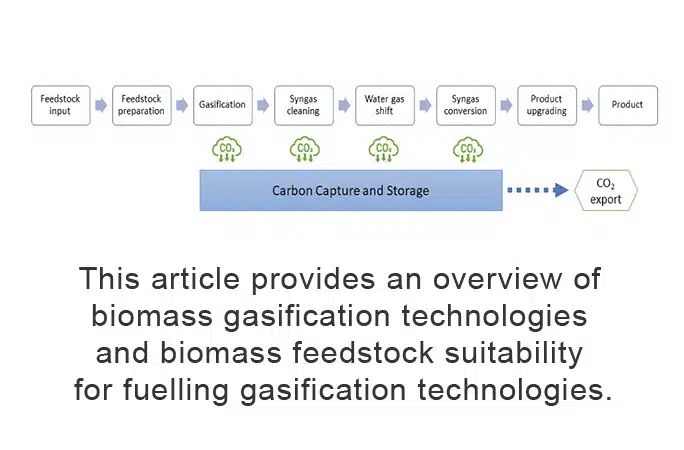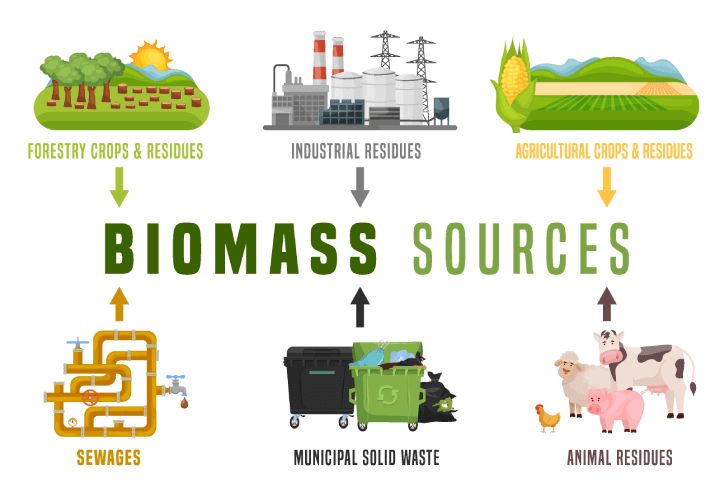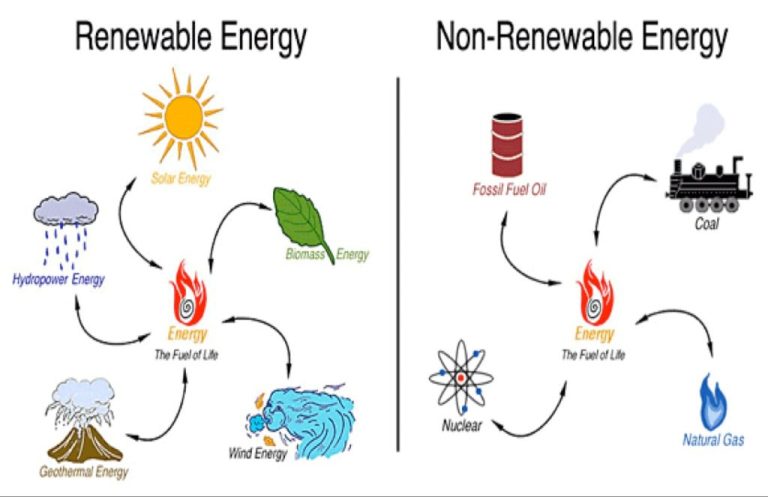What Biomass Is And How It Is Involved In Energy Transfer?
What is Biomass?
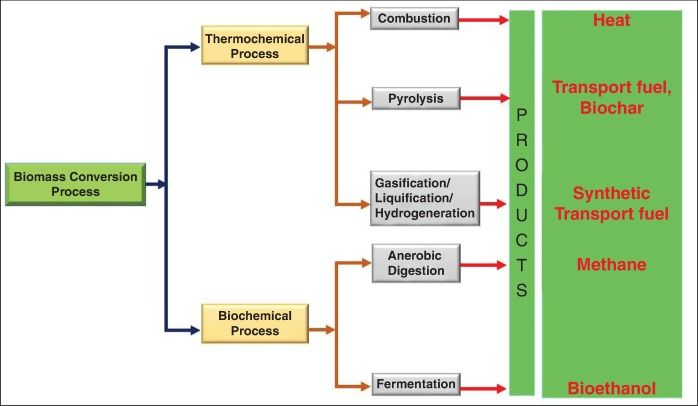
Biomass refers to organic matter that comes from plants and animals and contains stored energy from the sun. The Merriam-Webster dictionary defines biomass as “plant materials and animal waste used especially as a source of fuel” [1]. The Cambridge Dictionary states biomass is “material that is living or comes from living organisms” [2].
Biomass contains carbon-based molecules from living organisms that can produce energy. Common examples of biomass include wood, crops, sewage, yard clippings, food waste, agricultural residues, and animal manure. These materials originate from plants that undergo photosynthesis to store solar energy, as well as animals that eat plants and convert the stored energy. Biomass can be burned directly or converted into liquid biofuels or biogas to release usable energy.
Role of Biomass in Ecosystems
Biomass plays a critical role in energy transfer within ecosystems. Producers, such as plants, algae, and some bacteria, convert solar energy into chemical energy through the process of photosynthesis. This process produces biomass in the form of sugars and plant matter that the producers use for growth and functioning.
Consumers, including herbivores and carnivores, obtain energy by eating biomass in the form of plant or animal matter. When herbivores eat plant biomass, and carnivores eat herbivores, energy is transferred from one organism to another. With each transfer, some energy is lost as heat, requiring more biomass to be consumed at higher trophic levels. According to the National Geographic Society, typically around 90% of energy is lost with each transfer.
Finally, decomposers like fungi and bacteria break down dead organic matter and waste products, converting biomass back into inorganic molecules like carbon dioxide. Decomposition makes nutrients available again for producers to use in photosynthesis.
In this way, biomass provides the chemical energy needed for all life in an ecosystem. It flows from producers to consumers and is recycled by decomposers in a continuous cycle.
Using Biomass for Energy
Biomass is plant or animal material that can be used as fuel to produce energy. Burning biomass releases the stored chemical energy within it. This energy can then be harnessed for heating, electricity generation, and transportation fuels.
There are two main ways to convert biomass into usable energy:
-
Direct combustion: Biomass is burned directly to produce heat for heating buildings or to generate electricity. Examples include burning wood, crop residues, and waste in boilers or power plants.
-
Conversion to biofuel: Biomass is processed into liquid and gaseous fuels like ethanol, biodiesel, and biogas. These can directly replace fossil fuels like gasoline, diesel, and natural gas.
Like fossil fuels, biomass contains stored energy from photosynthesis. But while fossil fuels take millions of years to form, biomass can be rapidly renewed and replenished through farming and forestry. This makes biomass a renewable energy source, while fossil fuels are finite resources.
However, the potential energy and environmental benefits of biomass vary greatly depending on the type and source. Sustainably sourced biomass like perennial crops or waste materials offer the most benefits.
Types of Bioenergy from Biomass
There are several main types of bioenergy that can be produced from biomass feedstocks:
Biofuels
Biofuels like ethanol and biodiesel are commonly produced from biomass sources like corn, sugarcane, and vegetable oils. Ethanol is blended with gasoline as a renewable transportation fuel. Biodiesel can be used in diesel engines as a replacement for petroleum-based diesel fuel. Biofuels help reduce dependence on fossil fuels (https://books.google.com/books?id=n9PVDwAAQBAJ&pg=PA373&lpg=PA373&dq=%22types+of+bioenergy+from+biomass%22&source=bl&ots=GnR70W6ilU&sig=ACfU3U3qc7zPhKXi0GdHR4WixKA1WLFORw&hl=en&sa=X&ved=2ahUKEwickObzvqOEAxXQjIkEHZ44AZkQ6AF6BAgKEAM).
Biogas
Biogas can be produced from biomass through anaerobic digestion of organic matter like manure, food waste, and sewage sludge. This methane-rich gas can be used similarly to natural gas for heating, electricity generation, and vehicle fuel (https://aiob.talleramate.com/).
Direct Combustion
Solid biomass fuels like wood, agricultural residues, and solid waste can be directly combusted to produce heat and electricity. This type of bioenergy is used in biomass power plants as well as smaller-scale boilers and furnaces.
Benefits of Using Biomass for Energy
Biomass is often considered a renewable and sustainable resource because plants and organic matter used to produce it can regrow relatively quickly compared to the millions of years needed for fossil fuels to form. Using biomass as an energy source can help reduce dependence on fossil fuels such as oil, coal, and natural gas that emit high levels of greenhouse gases when burned.
Bioenergy from biomass also has the potential to be close to carbon neutral. This means that the carbon dioxide released when biomass is burned is balanced by the carbon dioxide absorbed as new biomass grows. However, the carbon neutrality of biomass depends on factors like the source of the biomass and how sustainably it is produced. For example, burning waste materials releases carbon that would decompose anyway, resulting in no net increase in emissions. But cutting down forests to make wood pellets does result in a net increase until new trees can regrow and reabsorb the carbon released.
Challenges of Using Biomass for Energy
While biomass can provide clean energy, using it also comes with some challenges. One major challenge is that growing biomass requires substantial land and other resources like water and fertilizer.[1] The amount of land needed to grow enough biomass to produce energy on a large scale could compete with land needed for growing food crops. There are also costs for fertilizers, irrigation, harvesting, and transportation of the biomass.[2]
Once the biomass is grown, it needs to be processed and transported to facilities to generate energy. This requires energy inputs and infrastructure. The processing and transportation stage also contributes to greenhouse gas emissions.[3]
The carbon neutrality of biomass is also debated. While plants absorb carbon dioxide as they grow, burning biomass releases carbon dioxide again. The extent to which biomass energy is carbon neutral depends on factors like the feedstock source and how sustainably it was produced.[2] There are concerns that some biomass energy generation may not achieve complete carbon neutrality.
Sustainable Practices for Biomass Energy
Biomass energy can be produced sustainably if certain practices are followed. First, it is important to use waste materials like crop residues, manure, and wood waste as feedstocks whenever possible. This helps make use of materials that would otherwise go to waste. For example, a UNDP project in Africa focused on using crop waste and manure to produce biomass energy rather than clearing forests or diverting crops from the food system (UNDP, n.d.).
Second, if growing dedicated energy crops, they should be planted in a way that does not compete with food production or harm ecosystems. Rotating crops, using marginal lands, and employing efficient irrigation practices allows energy crops to be grown sustainably. The UNDP project also worked to promote these sustainable farming methods for energy crops in Africa (UNDP, 2019).
Finally, transportation emissions can be minimized by locating biomass energy facilities near the source of feedstocks. Shorter transport distances reduce fossil fuel usage for hauling biomass materials. The UNDP project aimed to promote small-scale biomass energy systems in rural communities for this reason (UNDP, 2014).
Current Use of Bioenergy Globally
According to the Global Bioenergy Statistics 2022 report from the World Bioenergy Association, bioenergy accounted for around 15% of total global renewable energy production in 2020 [1]. This percentage has remained relatively constant over the past decade. The largest shares of bioenergy are used for heating, electricity, and transportation fuel.
The top regions utilizing bioenergy are Asia, North America, and Europe. Asia generates 34% of its total energy from biomass sources. The United States and Brazil are major producers and consumers of biofuels for transportation. The European Union meets around 9% of its heating and cooling needs with biomass [2].
Global bioenergy use is projected to continue growing in the coming decades. The International Energy Agency (IEA) forecasts that modern bioenergy demand could reach 75 exajoules by 2030, nearly double current levels. This growth will be driven by increasing use of bioenergy for power generation, biofuels for transportation, and biomass-based heating [2]. Realizing this potential will require further technology development and sustainable biomass supply chains.
Innovations in Biomass Energy
There have been several key innovations in biomass energy technology in recent years focused on developing more sustainable and efficient ways to harness bioenergy. Advanced biofuels and bioproducts are being produced from new types of biomass feedstocks and more efficient conversion processes.
Advanced biofuels from algae and other sources are being developed as potential replacements for fossil fuels. These include biodiesel, bioethanol, renewable diesel, and jet fuels. Research is focused on finding algal strains with high oil yields that can be sustainably mass cultured and harvested.1
New biomass feedstocks are also being explored, such as agricultural residues, woody biomass from forests, and municipal solid waste. Agricultural wastes like corn stover, sugarcane bagasse, and wheat straw can provide cellulosic biomass. Fast-growing energy crops like switchgrass and Miscanthus are grown specifically for bioenergy. More efficient and sustainable harvesting techniques are being developed for these resources.
Thermochemical and biochemical conversion processes for biomass are improving in terms of yield and efficiency. These include pyrolysis, gasification, anaerobic digestion, and microbial fermentation. Advanced bio-refineries are being designed to convert diverse types of biomass feedstocks into multiple products.
Other recent bioenergy innovations include turning biomass into bioplastics, fabric, insulation, and construction materials. There is also ongoing research into producing renewable hydrogen from biomass via biological and thermochemical pathways.
The Future of Biomass Energy
The future looks bright for biomass energy. Projections estimate the global biomass power market will grow at over 5% annually through 2030 as countries continue to adopt renewable energy sources (The Role of Biomass Energy in the Future of Electric Power Generation). Biomass has the potential to replace a significant portion of fossil fuels used for heat, electricity, and transportation fuel. Some analysts predict bioenergy could provide 20-25% of global energy demand by 2050.
While promising, some challenges remain for widespread biomass adoption. There are concerns about the sustainability and carbon neutrality of certain biomass feedstocks if not properly managed. The infrastructure for collecting, storing, and transporting biomass needs major upgrades in many regions (Biomass Energy and Zero Emission Neighborhoods). Additionally, costs need to continue to decrease through technological innovations to be economically competitive with conventional fuels.
Overall, biomass energy has an important role to play in the transition to renewable energy. With responsible policies and practices, biomass can provide clean, renewable power to meet our future energy needs.

